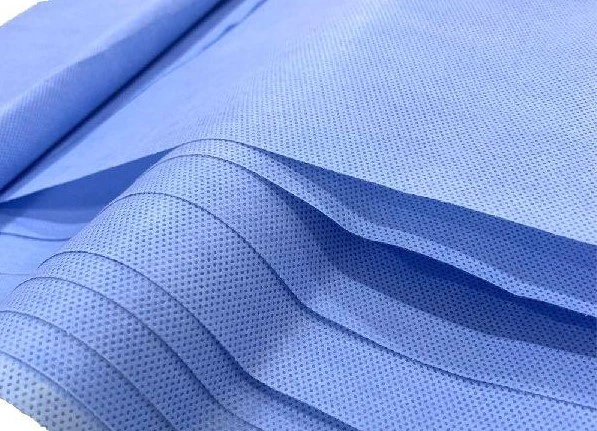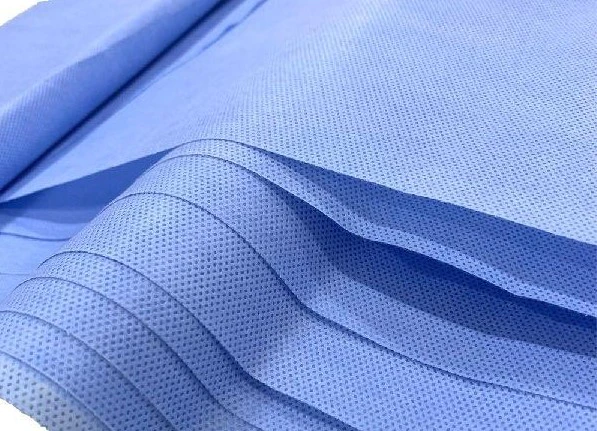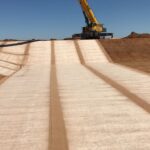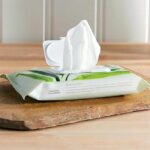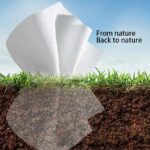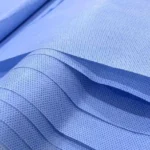Understanding the Versatile World of Nonwoven Fabric. Nonwoven fabric, often referred to simply as nonwovens, is a remarkable textile material that has found its way into countless aspects of our daily lives, often without us even realizing it. This article takes a deep dive into the world of nonwoven fabric, exploring what it is, how it’s made, its many applications, and the advantages it brings to various industries.
Nonwoven fabric, in essence, is a fabric that is not woven or knitted. Unlike traditional fabrics like cotton or wool, nonwovens are made by directly bonding fibers together, rather than weaving or knitting threads. This unique manufacturing process has given rise to a material with distinct properties and applications.
The Nonwoven Fabric Manufacturing Process
Nonwoven fabrics can be produced through several different methods. Each method has its own set of characteristics and uses:
- Spunbond: This method involves stretching tiny fibers, then bonding them together using heat and pressure. The result is a strong and smooth fabric often used in products like disposable face masks and surgical gowns.
- Meltblown: Meltblown fabric is created by blowing hot air onto melted plastic to produce very fine fibers. Its fine texture makes it ideal for use in filters and absorbent materials.
- Needle Punching: In this process, barbed needles mechanically interlock the fibers, creating a strong and durable fabric. You’ll often find needle-punched nonwovens in applications like carpets and automotive interiors.
- Chemical Bonding: Some nonwoven fabrics are made by applying special chemicals to help the fibers stick together. This method allows manufacturers to customize the fabric’s properties, such as its strength, texture, or absorbency.
The Advantages of Nonwoven Fabric
Nonwoven fabric offers several advantages that make it a valuable choice for various industries:
1. Versatility: Nonwoven fabric is incredibly versatile. Its properties can be customized based on the intended application, making it suitable for a wide range of products.
2. Cost-Effectiveness: The production of nonwoven fabric is often more cost-effective than traditional woven or knitted fabrics. This cost efficiency is particularly appealing for products that are disposable or used in large quantities.
3. Ease of Production: Nonwoven fabrics can be manufactured quickly and in large quantities, making them ideal for mass production. This efficiency is especially important in industries like healthcare, where a steady supply of items like medical gowns and face masks is critical.
4. Absorbency: Some nonwoven fabrics are engineered to be highly absorbent, making them ideal for use in medical products, cleaning wipes, and hygiene products. The ability to quickly absorb and retain liquids is a key advantage.
5. Customizability: Manufacturers can tailor nonwoven fabrics to meet specific requirements, including varying thickness, porosity, strength, and texture. This allows them to create materials that match the needs of different products.
Applications of Nonwoven Fabric
Nonwoven fabric can be found in a wide range of everyday products and various industries. Let’s explore some of its most common applications:
1. Hygiene Products: Disposable diapers, sanitary napkins, and adult incontinence products often use nonwoven fabric due to its softness, absorbency, and cost-effectiveness. These properties make them comfortable and efficient for absorbing and retaining fluids.
2. Medical Products: Nonwoven fabric plays a crucial role in the medical field. It’s used in medical gowns, surgical masks, wound dressings, and sterile wraps due to its strength, softness, and sterility. These products require materials that are safe for patients and medical professionals.
3. Household Products: Cleaning wipes, dishcloths, and mop heads are frequently made from nonwoven fabric. Its strength and absorbency are valuable for cleaning and wiping surfaces. The disposability of nonwoven cleaning products also makes them convenient for everyday use.
4. Packaging: Nonwoven bags and wrapping materials are gaining popularity as alternatives to plastic. They’re not only cost-effective but also environmentally friendly. Nonwoven bags can be reused, reducing the consumption of single-use plastic bags.
5. Construction and Agriculture: Nonwoven fabrics are used in geotextiles, which help control soil erosion and provide stability in construction projects. They’re also used as landscape fabrics in gardening to control weeds and retain moisture.
6. Automotive Industry: Nonwoven fabrics are commonly found in the automotive sector, used in applications like car interiors, headliners, and trunk liners. They provide insulation, sound absorption, and durability.
7. Filtration: Nonwoven materials are used in a wide range of filtration applications, including air filters, liquid filters, and oil filters. The fine texture of melt-blown nonwovens, in particular, makes them effective for capturing tiny particles and contaminants.
8. Fashion and Apparel: Nonwoven fabrics have also found their way into fashion and apparel. They’re used in garments for their unique textures and designs, as well as for their lightweight and breathable properties.
Nonwoven Fabric: A Quiet but Essential Industry
Nonwoven fabric is everywhere, quietly supporting our daily lives in numerous ways. Whether it’s the face mask you wear, the disposable diaper you use for your baby, or the cleaning wipes you reach for to tackle spills, nonwoven fabric is an essential component of these products.
In the medical field, nonwoven fabrics have played a significant role in maintaining safety and hygiene. During the COVID-19 pandemic, the demand for nonwoven face masks and protective gear surged, showcasing the importance of this unassuming material in safeguarding public health.
The construction industry benefits from nonwoven geotextiles, ensuring that roads and landscapes remain intact. In agriculture, nonwoven fabrics help gardeners and farmers control weeds and conserve water, contributing to more sustainable practices.
Furthermore, nonwoven fabrics are instrumental in the automotive industry, where they provide insulation, soundproofing, and a comfortable interior environment.
Nonwoven materials also play a vital role in protecting the environment. Nonwoven bags are becoming increasingly popular as eco-friendly alternatives to single-use plastic bags. These reusable bags reduce waste and plastic pollution.
In summary, nonwoven fabric is a remarkable and versatile material that has quietly embedded itself into every aspect of our lives. From personal hygiene products to healthcare, household goods, agriculture, construction, fashion, and more, nonwoven fabric offers unique properties that meet the specific needs of different applications.
The adaptability and cost-effectiveness of nonwoven fabric continue to drive innovation in industries across the globe. As technology advances and our understanding of material science deepens, we can expect to see even more creative and sustainable applications for this incredible material in the future.
Conclusion
Nonwoven fabric is not just a piece of cloth; it’s a testament to human.
Types of Nonwoven will come in next upcoming blog.
